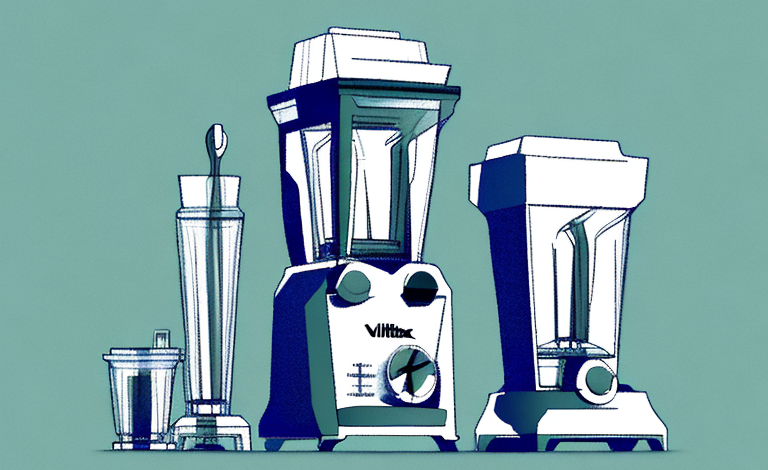In the world of forensic science, fingerprints are considered one of the most reliable and accurate forms of evidence. Every person has a unique set of fingerprints, which can be used to identify them and connect them to a crime scene. But did you know that there is such a thing as a master fingerprint?
The Basics of Fingerprint Identification
Before diving into what a master fingerprint is, it’s important to have a basic understanding of how fingerprint identification works. When a person touches a surface, they leave behind an impression of their unique fingerprint. This impression can be collected and analyzed by forensic experts to identify the individual who left it behind.
Understanding the Science behind Fingerprinting
The science behind fingerprint identification is based on the fact that no two people have the same fingerprint. Even identical twins have different fingerprints! Fingerprints are formed in the womb and are determined by factors such as genetics and the environment inside the womb.
There are three main types of fingerprints: arches, loops, and whorls. Arches are the least common type and have a simple, smooth ridge pattern. Loops are the most common type and have a ridge pattern that enters from one side of the finger, curves around, and exits from the same side. Whorls have a circular or spiral ridge pattern and are the second most common type.
Fingerprinting has been used for identification purposes for over 100 years. It was first used in the late 1800s by Sir Francis Galton, a British scientist who was interested in the study of heredity. Today, fingerprinting is used not only for criminal investigations but also for background checks, employment screening, and even to access secure areas in buildings.
The Unique Characteristics of Fingerprints
Each fingerprint is made up of ridges and valleys, which are unique to each person. These ridges and valleys create patterns, such as loops, whorls, and arches, which can be used to identify an individual. Even more fascinating is the fact that fingerprints are also unique from finger to finger on the same person, creating a virtually foolproof method of identification.
Aside from being unique to each individual, fingerprints also have the ability to change over time. This can be due to factors such as aging, scarring, or even manual labor. However, despite these changes, the underlying pattern of ridges and valleys remains consistent, allowing for accurate identification.
Fingerprints have been used for identification purposes for over a century, and their reliability has only increased with advancements in technology. Today, fingerprints are not only used in criminal investigations, but also in everyday life, such as unlocking smartphones and accessing secure buildings. The study of fingerprints, known as dactyloscopy, continues to be an important field in forensic science.
How are Fingerprints Collected and Analyzed?
Forensic experts can collect fingerprints from a crime scene using a variety of methods, including dusting, lifting, and chemical development. Once the prints are collected, they are analyzed using specialized software to identify the unique patterns and characteristics. The software then compares the prints to a database of known prints to identify the individual who left the impression.
The Role of Master Fingerprint in Crime Investigation
A master fingerprint is a term used to describe a complete set of fingerprints for an individual. In crime investigation, forensic experts may use a master fingerprint to compare against prints found at a crime scene to determine if there is a match to a suspect.
Master fingerprints are unique to each individual and can be used to positively identify a suspect in a crime. This is because the patterns and ridges on each person’s fingers are completely unique and do not change over time.
However, it is important to note that master fingerprints are not always foolproof in identifying a suspect. In some cases, the quality of the fingerprints found at a crime scene may be poor or incomplete, making it difficult to make a positive match. Additionally, some individuals may intentionally alter their fingerprints in an attempt to avoid detection.
The Importance of Master Fingerprint in Forensic Science
Master fingerprints are crucial in forensic science because they provide a foolproof method of identification. Even if a person tries to alter or disguise their fingerprints, a master set of prints can still be used for comparison.
In addition, master fingerprints can also be used to link a suspect to multiple crime scenes. By comparing the fingerprints found at different crime scenes to a master set of prints, investigators can determine if the same person was present at each location. This can be especially helpful in cases where the suspect denies involvement in one crime but is linked to others through their fingerprints.
Different Types of Fingerprinting Techniques
There are several different types of fingerprinting techniques used in forensic science, including inked fingerprints, live scan fingerprints, and palm print analysis. Each technique has its own unique advantages and disadvantages, and forensic experts may use one or more methods depending on the situation.
Advancements in Fingerprinting Technology
The field of fingerprinting technology is constantly evolving, with new advancements being made all the time. For example, some forensic experts are now using 3D printing to create replicas of fingerprints, which can be used for training purposes. Other advancements include improved image analysis software and faster processing times.
One of the most exciting advancements in fingerprinting technology is the use of nanotechnology. Researchers are exploring the use of nanoparticles to enhance the visibility of fingerprints, making it easier to identify suspects. This technology could also be used to detect trace amounts of drugs or explosives on a suspect’s hands.
Another area of development is the use of artificial intelligence (AI) in fingerprint analysis. AI algorithms can quickly analyze large amounts of data and identify patterns that may not be visible to the human eye. This could lead to more accurate and efficient identification of suspects, as well as faster processing times for law enforcement agencies.
Limitations and Challenges of Fingerprinting Analysis
While fingerprinting technology is incredibly accurate, there are limitations and challenges to the analysis process. For example, a print collected from a surface that has been recently cleaned may not have enough detail to be analyzed. Additionally, if a person has suffered an injury or has a skin condition that affects their fingerprints, the prints may not be usable for analysis.
Another limitation of fingerprinting analysis is that it requires a comparison to a known set of prints. If there are no known prints to compare to, the analysis cannot be completed. This can be a challenge in cases where the suspect has no prior criminal record or has never been fingerprinted before.
Furthermore, fingerprinting analysis can be time-consuming and expensive. It requires specialized equipment and trained professionals to collect and analyze the prints. This can lead to delays in investigations and higher costs for law enforcement agencies.
How to Protect Your Fingerprint from Identity Theft
With the rise of digital technology, there is a growing concern about the potential for fingerprint identity theft. To protect your fingerprint, it’s important to be cautious about sharing your personal information and to use secure devices and software when giving your fingerprints for identification purposes.
Another way to protect your fingerprint is to regularly clean your phone or other devices that have your fingerprint stored. This can prevent someone from accessing your fingerprint through a smudge or residue left on the device. Additionally, consider using a password or PIN in addition to your fingerprint for added security.
If you suspect that your fingerprint has been compromised, it’s important to take action immediately. Contact your bank, credit card companies, and any other organizations that may have your fingerprint on file to alert them of the potential breach. You may also want to consider freezing your credit to prevent any unauthorized activity.
Future of Fingerprinting Technology
The future of fingerprinting technology is bright, with many exciting advancements on the horizon. Some experts predict that we may one day be able to use fingerprints for even more advanced forms of identification, such as unlocking our phones, accessing secure buildings, and even making payments.
One area where fingerprinting technology is already making a big impact is in the field of forensic science. With the development of more sophisticated fingerprinting techniques, investigators are now able to identify suspects and solve crimes more quickly and accurately than ever before. In fact, some experts believe that fingerprinting technology could eventually replace DNA testing as the primary method of identifying suspects in criminal investigations.
Another exciting development in the world of fingerprinting technology is the use of 3D printing to create artificial fingerprints. This technology has the potential to revolutionize the way we use fingerprints for identification, as it allows for the creation of highly detailed and accurate replicas of real fingerprints. This could be particularly useful in situations where a person’s fingerprints are difficult to obtain, such as in cases where the individual has suffered burns or other injuries to their hands.
Common Myths about Fingerprints Debunked
There are many myths and misconceptions about fingerprints, including the idea that fingerprints can be altered by filing or sanding down the ridges. However, this is simply not true – even minor alterations to the ridges can make the print unusable for identification purposes.
Another common myth about fingerprints is that identical twins have the same fingerprints. While twins may have very similar prints, they are not identical. Fingerprints are formed by a combination of genetic and environmental factors, and even identical twins have different experiences in the womb and after birth that can affect the formation of their prints.
Additionally, some people believe that wearing gloves or using hand sanitizer can completely erase their fingerprints. While gloves can make it more difficult to leave a clear print, they do not completely eliminate the unique ridges and patterns on your fingers. Similarly, hand sanitizer may temporarily remove oils and dirt from your skin, but it does not alter the underlying structure of your fingerprints.
Famous Cases Solved by Master Fingerprint Analysis
Over the years, there have been many high-profile cases solved by the analysis of fingerprints. One of the most well-known cases is the Lindbergh baby kidnapping, which was solved using fingerprints found on a ransom note. Other notable cases include the Boston Strangler and the assassination of Martin Luther King Jr.
Legal Implications and Admissibility of Fingerprints as Evidence
As with any form of evidence, fingerprints must comply with strict legal standards to be admissible in court. Forensic experts must be able to demonstrate that the prints are reliable and were collected and analyzed properly.
In conclusion, a master fingerprint is a crucial tool in forensic science, providing a reliable method of identification in criminal investigations. With continued advancements in fingerprinting technology, we can expect even more accurate and efficient analysis in the years to come.



